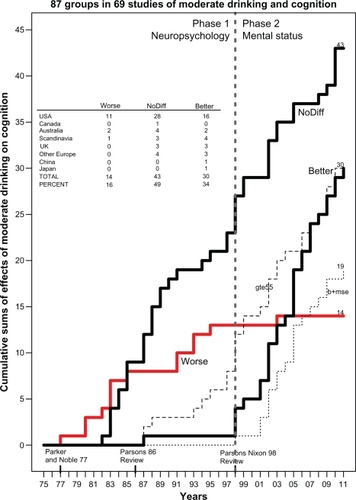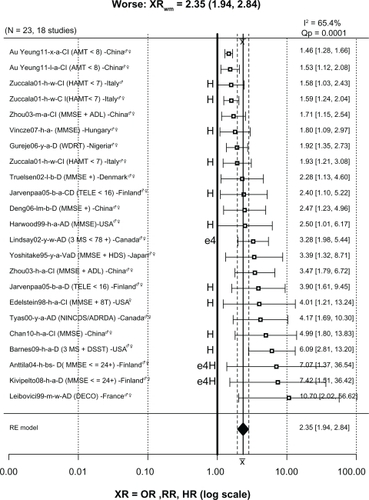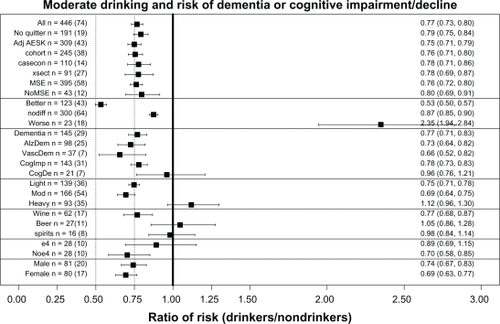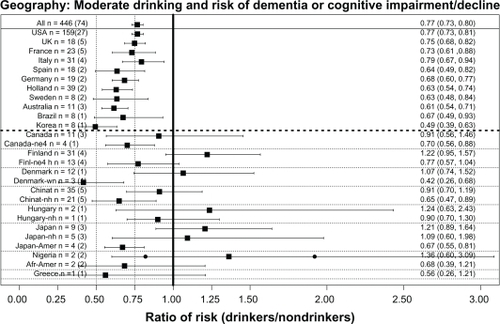Figures & data
Table 1 Cognitive performance in drinkers in “non-ratio” studies, 1977–1986, 1986–1996, and 1997–present
Table 2 The 74 studies providing ratios of risk listed by decade





